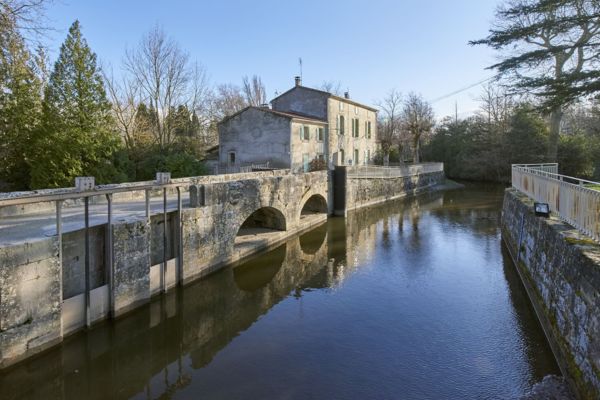
Revel and the Canal du Midi
The town of Revel is one of the last fortified towns to be founded by the French monarchy in 1342. This is where Riquet lived when he started his career in the salt storehouses.
A few years later, it was right here, at the foot of the Montagne Noire, that Riquet came up with the ingenious solution to supply water to his Canal du Midi. And that's how his dream became reality!
The history of the Canal du Midi in Revel
Revel is where Riquet explored the Montagne Noire
In 1647, Pierre-Paul Riquet came to live in Revel with his family. He worked as a tax farmer for the salt storehouses in Mirepoix and Castres. Revel is located between Mirepoix, Castres and Toulouse, and it was from this town that Pierre-Paul Riquet explored the area around the Montagne Noire and improved his knowledge of the geography of his waterways.
In the 17th century, Revel was a place that relied mainly on farming. The town was in debt following the obligation to provide for the needs of the Royal army quarters that were located there in winter 1653. Thanks to his personal fortune and the profit he had made from banking, Riquet supported the town financially with some significant loans.
A town at the heart of the Canal du Midi water supply
In 1660, Riquet moved to the Château de Bonrepos that he had purchased several years earlier. He came back to Revel when he was conducting studies to build the Canal du Midi water supply system. It is believed that he lived in the Maison des Consuls (underneath the central indoor market) and that is where he worked from.
To create his channel, which was key to the canal water supply, Riquet wanted to use an ancient medieval canal that once supplied the town from Pont Crouzet. That is why the channel runs alongside the ramparts of Revel.
His plan to convey water along the channel was a success! This then prompted Riquet and the various stakeholders in the canal project to redesign the channel's destination, and they decided to extend it to make navigation possible between Naurouze and Revel.
This decision meant that the town would soon have its own little commercial port (port Louis). This port is no longer there today, instead you'll find the municipal swimming pool, and some ruins of an ancient mill (the Moulin du Roi). Navigation along the channel was not successful as expected, and so Port Louis was abandoned shortly after its creation.
Revel and the Saint-Ferréol reservoir
Up in the highlands of Revel, there's a key structure for the Canal du Midi: the Saint-Ferréol reservoir. At the time of its construction, this was one of the biggest water reservoirs ever to be built!
The Saint-Ferréol site is now used as a leisure complex and visitors and locals go there to cool off in the summer.
The Canal du Midi must-sees in the Montagne Noire
Exploring the source of the Canal du Midi
On foot or by bike
There's no better way to explore the historic features of the Canal du Midi than on a walk or bike ride. Revel and the surrounding area are at the heart of the construction of the waterway, and there are some great sights to see there.
At Saint-Ferréol lake there's a designated swimming area, a leisure complex and a peaceful area for walks and bike rides.
The Musée du Réservoir: not-to-be-missed
A visit to the Canal du Midi's Musée du Réservoir is highly recommended. The exhibitions portray the history of the waterway and the construction work, with eyewitness accounts!
Practical information
To make the most of your time in Revel, here is some practical information you might find useful:
Contact the Revel Tourist Office
Contact
and information
TOURIST OFFICE TO THE SOURCES OF THE CANAL DU MIDI LAURAGAIS REVEL SOREZOIS 13 rue Jean Moulin
31250 REVEL
Tél : 05 34 66 67 68








